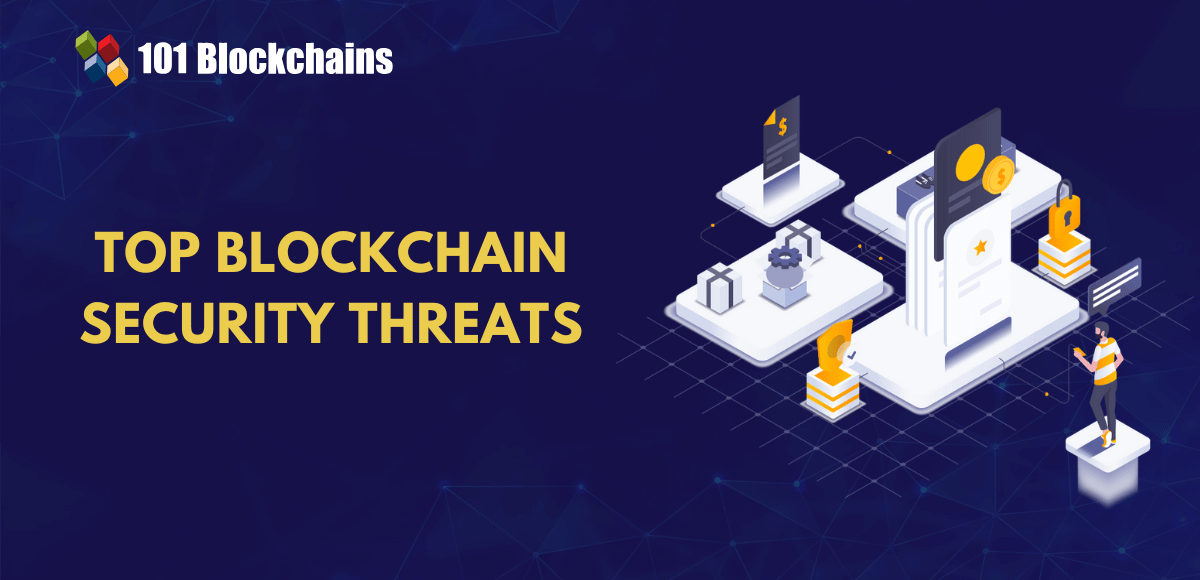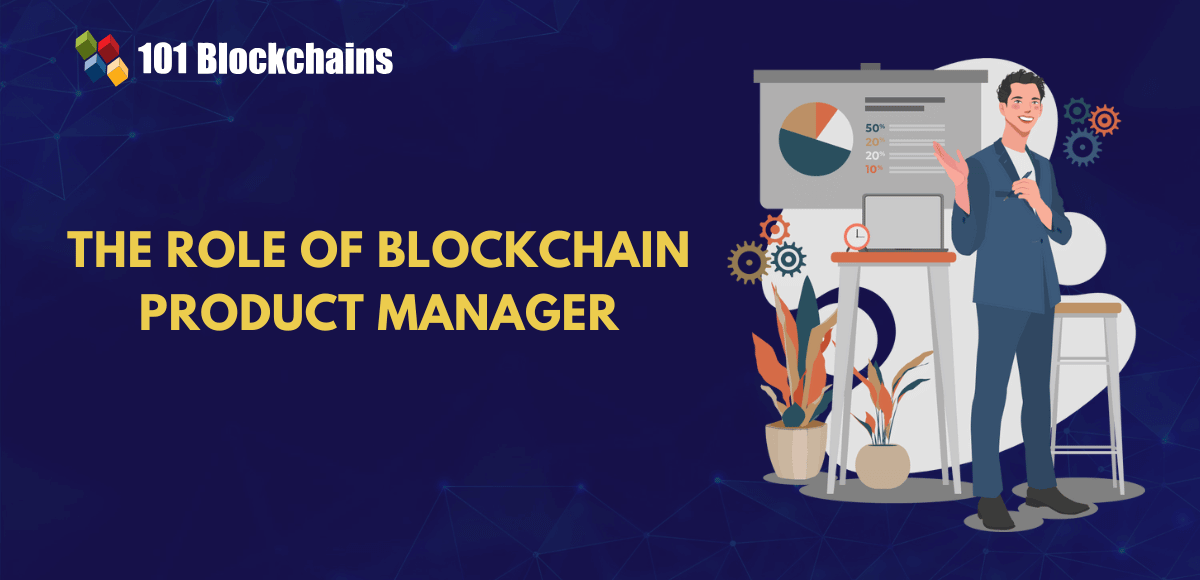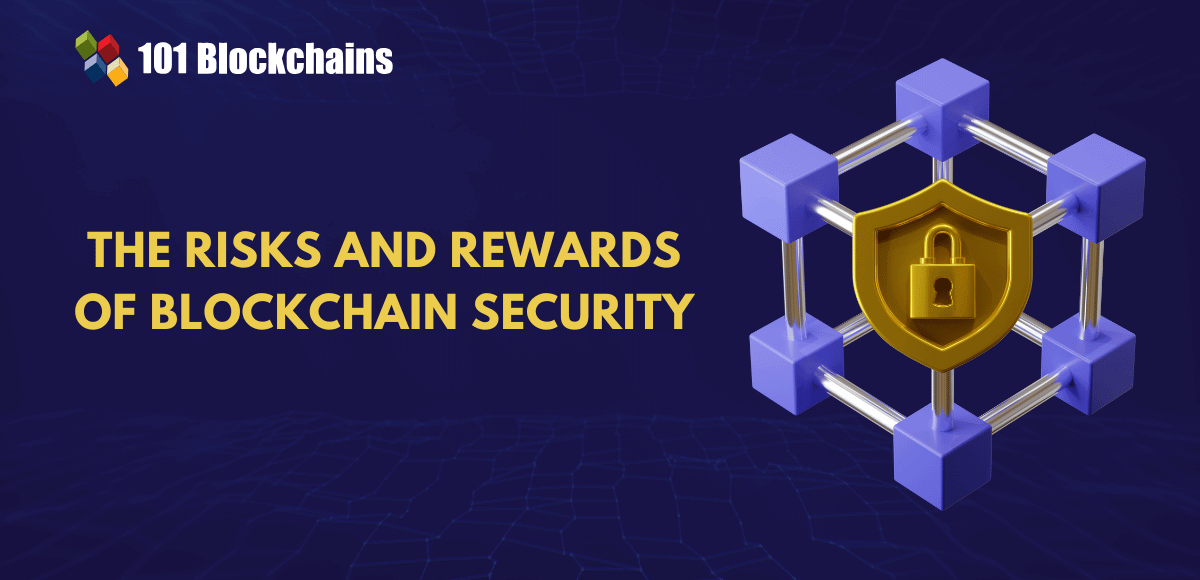Learn how blockchain truly works, master key definitions, and uncover what makes smart contracts so "smart." Dive into the fundamentals, gain valuable insights, and start your blockchain journey today!

- Blockchain
101 Blockchains
- on January 16, 2019
Blockchain Transformation Playbook
Blockchain is transforming the financial industry, unlike anything we have seen before. The concept has been in the making for decades but it was not until the boom of cryptocurrency, Bitcoin.
It looks like, the world is still adjusting to the surprise growth of blockchain. More regulations are in order and the vision for the future seems to have an important role for blockchain.
According to Forbes, large businesses and enterprises are not just exploring blockchain, but now implementing it. In simple words, businesses are looking for the blockchain transformation from traditional technology to the blockchain.
Build your identity as a certified blockchain expert with 101 Blockchains’ Blockchain Certifications designed to provide enhanced career prospects.
Future of Blockchain
Experts are predicting bright future for the industry. The global market value of the blockchain industry was mere $411 million, that is expected to reach around $8 billion in the next three years. In 2024, the blockchain market is expected to reach $20 billion.
According to a report, 10% of the global GDP will be stored on blockchains by 2027. This is huge progress keeping in mind, we are talking about less than a decade. There are some estimates that even predict $3 trillion blockchain market by 2030.
Similar to the dot-com era, the initial phase of blockchain was not spectacularly overwhelming. However, it is starting to find its footing in different industries outside the one it has pioneered.
Simply put, blockchain is no more limited to the financial sector, but have already transformed many other industries.
This Blockchain Transformation Playbook is for companies looking to incorporate blockchain in their structure and strategy. It is essentially tailored for companies with a market cap of at least $500 million. However, the basics can be followed by almost all companies irrespective of their size with little adjustments.
Any company can use the recommendation outlined in this playbook to work on blockchain projects that are ultimately poised to transform the entire business models.
Blockchain Implementation Challenges?
There is no doubt that Blockchain has the potential to transform many industries that we see today, but there are also challenges remain for wider adoption of this technology. For example:
- There is a need to establish platform standards especially to implement blockchain at the Enterprise level.
- Customers are looking into blockchain solutions that are industry-specific, not general purpose.
- To unlock the true value of blockchain, better interconnectivity between multiple independent blockchain platforms is required.
Curious to learn about blockchain implementation and strategy for managing your blockchain projects? Enroll Now in Blockchain Technology – Implementation And Strategy Course!
Playback Quick Overview
Please include attribution to 101blockchains.com with this graphic. <a href='https://101blockchains.com/blockchain-infographics/'> <img src='https://101blockchains.com/wp-content/uploads/2019/01/blockchain-transformation-playbook.png' alt='blockchain transformation playbook='0' /> </a>
Here are five basic steps you need to take to transform the company using blockchain technology:
- Start with small projects
- Build a blockchain taskforce
- Train the teams
- Develop a strategy
- Create internal and external networks
Factors Driving Blockchain Revolution
Before we move onto each step of our Blockchain Implementation Playbook, it is important to discuss the factors driving the blockchain growth.
Here are the factors:
-
Transparency
This is a common issue with the supply chain industry. Lack of transparency creates serious issues in the global supply chain leads that include safety and health concerns, as well as counterfeiting.
For example, counterfeiting alone costs over USD 7.5 billion each year to US-based semiconductors alone. Blockchain certainly offers a layer of transparency to blockchain industry to reduce their losses due to lack of transparency.
-
Complexity
You can find several intermediaries like brokers, financial institutions, and several third-party institutions that make global trade complex as well as slow. According to estimates, suppliers and businesses, especially in emerging markets, pay up to 30% of interest on receivable financing. This adds a lot to the cost of doing business.
-
Security
One of the key issues with a centralized architecture of information in the tech world is a security breach. Such centralized architectures are vulnerable to hacking attempts that makes them insecure. According to estimates, there will be 20 billion IoT devices in the world in the next two years, all vulnerable to hacks. Blockchain offers better security to the IT industry.
Blockchain offers a perfect solution to all of the above problem, thus these factors driving its growth. It builds trust at the enterprise level with the digitization of business processes, the codification of complex contracts, and tokenization of assets. By implementing these processes, businesses and enterprises can make business processes secure, simple, and more efficient.
1. Start With Small Projects
Like with any new venture, it is best to start small. For your initial projects, if you focus on smaller pilot projects rather than a full-fledged transformation then the risks are fewer. Such projects will have a meaningful impact and draw an achievable roadmap for the company. The success would convince stakeholders to show more initiative and involvement.
Nevertheless, the projects should be significant enough to create an impact. Ideally, you would want to use the true entrepreneurial spirit by using the blockchain technology to address the existing problems in the company’s strategy or operations.
The blockchain is a leading digital transformation technology that allows you to address the problems in an effective way, to bring in more transparency, and to develop a more effective process.
Blockchain Transformation Guidelines
Here are few guidelines regarding the small blockchain projects you want to start with:
- The objectives of the project should be clear and measurable.
- The project’s feasibility study should be conducted beforehand to ensure that the success possibilities are higher for the project.
- The existing developing and network security teams should be able to collaborate with external teams versed with the blockchain technology development.
- The project should show quantifiable progress within the first six months.
Starting out with a few pilot projects would help orchestrate a bigger movement. That is in essence what the transformation would be. When the success of the first or second project starts a momentum, it will essentially move the entire company in one direction.
The very best example of this would be Artificial Intelligence (AI). Today, it is paving the way in almost every industry from manufacturing to logistics to advertising. How did it all start? On a very small level.
Companies initiated small AI projects that helped them solve problems in their existing technology. Big tech companies that are investing millions today in AI once funded smaller projects within their organizations. This helped create a movement and created a path for the technology to dive into other industries.
The success of one project initiated another even bigger project. Engineers became more experienced. Investors became more interested. Finally, the technology boomed and transformed many existing industries. It is expected that by 2030, AI would contribute $13 trillion to GDP growth.
Same if the case with companies using blockchain technology, some big names that started small and now using blockchain on a much larger scale. These companies include Industrial Industrial and Commercial Bank of China (ICBC), JPMorgan Chase & Co. (JPM), Berkshire Heathaway Inc., Bank of America, Wells Fargo & Company, and many similar names.
Blockchain Use Cases
Here are some more companies using blockchain technology as an example or blockchain use cases.
- China Construction Bank: The CCB started with some of their financial products and used IBM blockchain platform to make the process simpler and straightforward, mostly for services they sell in combination with insurance companies.
-
- Agricultural Bank of China: Starting small, the bank has started a project to offer agricultural loans to mostly e-commerce merchants on a decentralized network.
- Apple Inc.: The global tech giant is starting with using blockchain to timestamp data.
- Toyota Motor Corp: The Japanese company is currently exploring ways to enable blockchain payments for self-driven cars.
- Samsung: The South Korean tech giant is using a blockchain platform to track global supply chains.
These are some great examples who some of the largest companies in the world are starting slow with blockchain, and working on smaller projects for now.
Overall, some of the major industries that are going through a blockchain disruption include financial industry, healthcare, real estate, legal industry, security, government, and education.
2. Build a Blockchain Task Force
When you invest in a technology like a blockchain, you need the right people to make things happen and that too at a faster rate. Obviously, you will need expertise in the field.
However, blockchain is a rather nascent technology. This will make it difficult to hire people from the outside. Keeping in mind the fact that you want the long-term benefits of the technology, you need a task force with people from within the organization.
The demand for blockchain skills has increased by 300% in just one year, with increased demand from businesses looking for blockchain transformation. This also raises the average salary ($84,884) which is now above the median US salary ($52,461).
Developing an In-house Team or Outsourcing: A Lesson to Learn
You need to look back at other technologies and how companies used their resources to benefit from them. There are important lessons to be learned. The digital transformation of many industries starting in the 90s meant hiring an expert, i.e., a CTO.
In that era, a company hiring a CTO was a big deal. In contrast, those who used independent projects using outside help did not fully leverage the benefit of the internet.
For blockchain applications for your business, you need strong leadership, expertise, and initiative. Your task force will need to be much more centralized which is a bit ironic considering blockchain is all about decentralization.
You will need a CTO or CDO to head the team working on these projects.
The key goals of this new task force would be as following:
- Create blockchain use cases
- Build blockchain capabilities from the ground up
- Build processes for successful delivery of different phases of the project
- Once tested, these processes will need to be repeated to ensure timely implementation
- Look for expertise and talent wherever there is a need in the team
- Develop standards to achieve with the different processes
- Utilize different divisions of the company to enrich the process and bring more opinions to the table
For big enterprises, cross-functioning would be a key to success. Many companies operate under different divisions that ultimately report back to the CEO. The new blockchain division would similarly report to the CEO under the leadership of the CTO or CDO.
-
Getting Ready for New Job Creations
There will be new job creations with specific descriptions and duties of your new blockchain team. Organizing these roles and what they contribute to the project is going to be the single most important aspect of the team.
The reason being this is going to be new for the task force as well. If their goals and duties are clearly defined, they will have a clear direction as to what their contribution and goals are.
You will need all hand on board including Project Managers, Product Managers, Data Scientists, Security Analysts, and Implementation Executives. All these taskforce members will report to the leader who will then report to the CEO. If need be the taskforce can be further divided into small teams.
-
Is There Any Blockchain Framework to Follow?
Unfortunately, there isn’t. There are no existing frameworks for blockchain development. The companies using blockchain will be challenged to devise frameworks and processes that work out best for their projects. The leader should be able to devise the right processes that utilize the skills and qualities of the task force.
Not every company would have ample people available to independently work on the blockchain project. Also, there may be a dearth of people with even the basic knowledge of this technology. That raises the need for looking outside the firm. Even if you do have people from within the organization for the project formulation and development, it would be opportunistic to still hire talent.
Once the blockchain technology becomes even more widespread as experts are predicting, the demand for blockchain experience and talent would skyrocket. This would be the prime time to hire people who have experience in this field. They can truly serve as a tool to get ahead of competition in the near future besides taking the current projects to fruition.
You may want to work with a recruiting partner to do this job for you. Even when you acquire such talent, providing them the right training to assimilate with the current team members would be required. It will help create a balanced task force that covers all aspects of the project and works in cohesion.
A Quick Checklist for Hiring Blockchain Developers: Skills to Look for
- In-depth understanding of blockchain network and its architecture.
- Ability to develop smart contracts independently.
- In-depth understanding of data structure and their link to front-end applications.
- Well-versed in cryptography and latest techniques
- Experience in application development
- An excellent understanding and knowledge of blockchain platforms
- Ability to incorporate blockchain proficiency as a service
3. Train the Teams
Formulating the task force is just the beginning. The real challenge would be training these individuals existing as well as those new hires. The financial industry is seriously lacking people experienced with blockchain and cryptocurrency, thus hindering the blockchain transformation in many industries.
The very nature of this technology can be attributed as a reason. Most people who started ICOs are independents who have worked with this technology for years without the support or involvement of big companies.
The good news is that these very people are pushing the blockchain narrative forward on the internet. There is a lot of material online in the form of publications, studies, white papers, and even interviews that can be used to train your team. Most importantly, there is a lot of talk about future blockchain applications.
-
Online Training Resources
You have online courses, YouTube videos, and podcasts that explain what is blockchain, how blockchain works, and how blockchain is different from the current technology employed by banks and other financial institutions.
This is obviously cost-effective as most of the content is free. It would be the job of the leaders and experts in the team to comb through the materials and find what they can use to train their team. Going through blockchain use cases is another great way to get your team ready.
Today, training practices within the companies have significantly improved. Again, thanks to technology and the internet. There are no boring lectures or slideshows but interactive videos and hands-on practices.
Such training can help the team understand the very basics as well as how to think about the future. They will be poised to become future innovators of blockchain in the service industry, banking, trading, etc.
That said, you will also need some in-person training. You can hire blockchain enthusiasts and consultants to deliver training sessions to your team. And this is not going to be just for the team members, leaders will need to take part as well.
Here is what you need to cover with the training material:
- Basic understanding of what is blockchain, its current applications, and benefits
- The impact of blockchain on current financial systems and economies
- Case studies of the most prominent cryptocurrencies (Bitcoin, Ethereum, and LiteCoin)
- Technical understanding of the technology how it works and what are the challenges
- Understanding of tools available currently
Here is the recommended number of hours for different members of the team:
- Executives: 4-6 hours
- Individual team leaders: 12-16 hours
- Engineers: 100-120 hours
Not sure how to build career in enterprise blockchains? Enroll Now: How to Build Your Career in Enterprise Blockchains
4. Develop Strategy
No project can become successful without a solid strategy. Creating the best strategy for a blockchain project is going to be both simple and challenging. Since there are not many enterprises working on the technology, you would be at liberty to create your own distinct goals. However, creating an achievable path would be difficult. The biggest of the challenge would be to identify where blockchain uses can be employed.
If you are wondering why strategy is not the first step as it traditionally is, it is because there needs to be some familiarity with the technology first which the training would provide. When the teams have attained basic experience with blockchain, formulating a strategy would become easier.
Before developing a detailed strategy, you also need to first identify the areas where you can implement blockchain transformation. To put it simply, you first have to do a detailed analysis of blockchain innovation and its impact on core business practices.
For example, blockchain in the service industry can be used to streamline the transaction process by digitizing assets and offering access to users who don’t have access to bank accounts.
Here is what you can plan for, and the goals you can set for the business:
- Providing end customers better access to your services through blockchain implementation.
- Can enhance your bookkeeping process.
- Better and flexible reserve management.
- Improvements in common business processes.
Once you have identified the right process to implement blockchain transformation, here is how you can develop a sound strategy.
Find Opportunities:
As mentioned earlier, start by identifying opportunities. For example, you can start with a list of small projects you want to start with, and then narrow them down to two or three as pilot projects.
You can create such list be identifying pain points in your current business process. For example, the processes you aren’t really satisfied with. These could be processes that are causing delays, back-office workarounds, and any areas that are causing client’s dissatisfaction. A customer feedback survey can also help you identify the pain-points in the business.
Next, you can identify processes that you want to streamline, like reconciliation of data or transaction processing. The blockchain is an excellent way to eliminate redundancy in data repositories, as well as identity issues. It can also reduce the risk of cyber-attacks and data hacks.
-
Exploring Readiness and Feasibility
As you choose your pilot projects, you also need to develop a hypothesis about how blockchain can make a difference. For example, you may want to create a hypothesis like:
“The implementation of blockchain will decrease the time needed for adjustments or settlements, or reduce the need of it in the first place, and improves transparency.”
Once you have developed a hypothesis, solidify it by consulting experts, learning about blockchain use cases in similar situations, or collecting more conclusive data that can back up your hypothesis.
-
Develop Prototypes and Test Them
Before Implementing the blockchain on the larger scale, it is imperative you start with prototypes first. This is a great way to improve the blockchain technology you so far worked on and make it more align with current practices before using it to replace the older technology.
The testing and evaluation process is important, both for your team or employees to get accustomed to the new technology and the process to get aligned with the latest technology. It will also help you and your team expand their awareness about blockchain technology and its results.
Match the results with your original hypothesis. See if it proves your hypothesis. If not, what are the adjustments that you need to make? Proceed forward with the results of the prototype in mind.
-
Scale Accordingly
Once you are satisfied with the results of the prototype, next is to scale your efforts. Develop a plan that is designed for a long-term blockchain transformation and implementation. Create a detailed roadmap of how to scale blockchain technology and your prototype but in an achievable and measurable way.
5. Developing External and Internal Communications
Last but not least, you need to take care of the internal as well as external communications as blockchain will have an impact on your business processes as well as output. You need to align your internal and external communications accordingly.
Blockchain transformation as you scale will affect your stakeholders, which means you need better communication to implement alignment. Here is how to communicate with each stakeholder.
-
Investors
With the betterment blockchain transformation brings to your business, it is important to re-evaluate your business in front of investors. A good strategy and communication help you make investors realize the true value of your company after the implementation of blockchain technology.
-
Relations with Government
If you are working in highly-regulated industries like healthcare and finance, it is important to stay compliant with all government regulations. Keep in mind, governments are also adjusting with the increased penetration of blockchain technology into mainstream industries and widespread use of cryptocurrencies.
You must be well-versed about all regulations related to blockchain technology but also communicate well with the corresponding government institutions. For example, you need to look into the Security and Exchange Commission (SEC) in the United States that is making some major changes in their regulations related to blockchain and cryptocurrencies.
-
Educate Your Customers
The changes blockchain transformation brings in to your processes is also new for your customers. You need to educate your customers as well, about the benefits blockchain offers them.
-
Finding and Recruiting Educate Human Resource
As we have mentioned earlier, finding the right human resource and skills is not easy due to the scarcity of talent. To attract better skillset, you need to have better employer branding. You must show skilled human resource you are a company that they want to work for.
For example, blockchain developers want to work with companies that allow them creative space and independence, as there is not framework associated with blockchain yet. An environment that encourages learning as blockchain technology is still involving. You need to communicate skilled people that your company offers exactly the same.
-
Internal Communication
Last but not the least, it is very important to communicate all changes and implementations to your employees, who may be confused, and some cases, scared of the new technology that is not well-known yet. You need to ensure your employees that the changes are for the betterment of the business, and also need to educate them about the future they may have to walk in along with blockchain transformation.
Want to know more about enterprise blockchains and supply chain management? Enroll Now: Enterprise Blockchains and Supply Chain Management Course
Final Words
This is an excellent resource to help you bring in changes and complete the blockchain transformation. The blockchain is now an integral part of the latest digital transformation businesses are implementing.
However, you need to start small if you are new to the blockchain. Find small pilot projects mostly related to the pain-points in your business and processes you want to streamline. Hire a talented workforce or train your current human resource. Bring in structure and accommodate new blockchain team in your business structure.
Develop a strategy to scale further once initial pilot projects result in success. And in the end, make sure that all stakeholders are communicated in time about the changes your business is bringing in terms of blockchain transformation.
Blockchain is a very advance technology and if you want to know more about it, enroll in blockchain certification and courses now!





